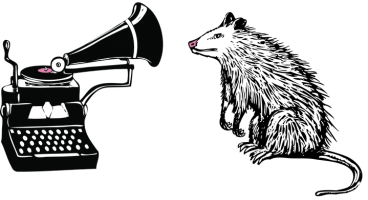by Rob Spillman
From Spring 2018
James Agee once said, “The mere attempt to examine my own confusion would consume volumes.” He also wrote, in Let Us Now Praise Famous Men:
“People hear Beethoven in concert halls, or over a bridge game, or to relax… Every fury on earth has been absorbed in time, as art, or as religion, or as authority in one form or another. The deadliest blow the enemy of the human soul can strike is to do fury honor…Get a radio or phonograph capable of the most extreme loudness possible, and sit down to listen to a performance of Beethoven’s Seventh Symphony or of Schubert’s C-Major Symphony. But I don’t mean just sit down and listen. I mean this: Turn it on as loud as you can get it. Then get down on the floor and jam your ear as close into the loudspeaker as you can get it and stay there, breathing as lightly as possible, and not moving, and neither eating nor smoking nor drinking. Concentrate everything you can into your hearing and into your body. You won’t hear it nicely. If it hurts you, be glad of it. As near as you will ever get, you are inside the music; not only inside it, you are it; your body is no longer your shape and substance, it is the shape and substance of the music.”
This is as close to a description of how I meditate as I’ve ever found. I want to be inside of music so loud, so punishing, so drone-like that I am bludgeoned into a non-state, a place of non-thinking. When the British band My Bloody Valentine plays live, their shows usually culminate in the song “You Made Me Realize.” It starts off as a fairly standard hard-driving song that shifts into an endless sonic loop from hell. Repeating the same chords and rhythms over and over, the band works its way into a fury, turning up the feedback while strobelights are aimed at the audience and disorienting images are flashed on screens behind them. The first time I saw them live, in 1995, they went into this fugue state for thirty minutes. It was so punishing that the majority of the audience moved backwards. I went as close to the speakers as I could get.
Kevin Shields, the leader of My Bloody Valentine, said his goal is to push people into an inbetween state usually associated with drugs or sleep deprivation. When he was recording the album Loveless, he would stay up for days on end, not knowing if he was asleep or awake when he was playing. When they returned to New York in 2008, after a ten-year hiatus, they brought with them new sound equipment that could handle the band’s maximum envisioned output. Before the tour, they tested the equipment in London, and it measured 14 decibels at the back of the hall. A jet engine at 100 yards reaches 130 decibels. Now, when the band went into “You Made Me Realize”, it was a truly crushing experience, one where it was impossible to have any other thoughts than I am here, and this is all that there is or could ever be.
For sanity’s sake, this kind of meditation is not possible on a daily basis. Sometimes I replicate this with headphones, especially when I am writing, trying to block everything out by having only one thing possibly existing—incredibly loud, repetitive music.
But live music is still the best way.
My daily meditation practice is slightly more sane. Since I was fifteen I have found something resembling peace through long bike rides and runs. I have run across the Grand Canyon, twenty-three miles from the North Rim to the South Rim with an elevation gain and drop of eight thousand feet. I have raced the Leadville 100, a high-altitude mountain bike race in Colorado that starts at ten thousand feet and crests at twelve and a half-thousand, with fourteen thousand feet of total climb over the ten hours of the grueling ride. In the last year I’ve run the New York and Chicago Marathons, and qualoified for this year’s Boston Marathon, which I am about to run for the first time.
When I run, I do not listen to music. There are musical loops that get stuck in my head, as well as stray thoughts, but as with classical meditation, I label them as thoughts and songs and try to let them go. My goal is to not think, but to be. I concentrate fully on my form, my breathing, syncing my steps to my breath, trying to reduce the world to what is in front of me. There are no emails, no deadlines, no Trump horrors. There is only the next step in front of me. If you see me in Boston, running with the 30,000 other starters, pushing my body through a corridor of two million spectators for 26.2 miles, I will no doubt have a thousand yard stare that means I am there and not there.
When I was a teenager, obliteration of the self was my primary goal. Now this erasure is a way of finding myself, finding what lies under all the artifice of urban living. Paradoxically, it is when I am most fully inside the music or inside my body during a long run that a creative insight will push into my consciousness. In the moment, I try to capture it, tag it for later examination, and return to the moment of no thought. The phenomenon is something like how David Lynch describes Transcendental Meditation: “Ideas are like fish. If you want to catch little fish, you can stay in the shallow water. But if you want to catch the big fish, you’ve got to go deeper. Down deep, the fish are more powerful and more pure. They’re huge and abstract. And they’re very beautiful.”
